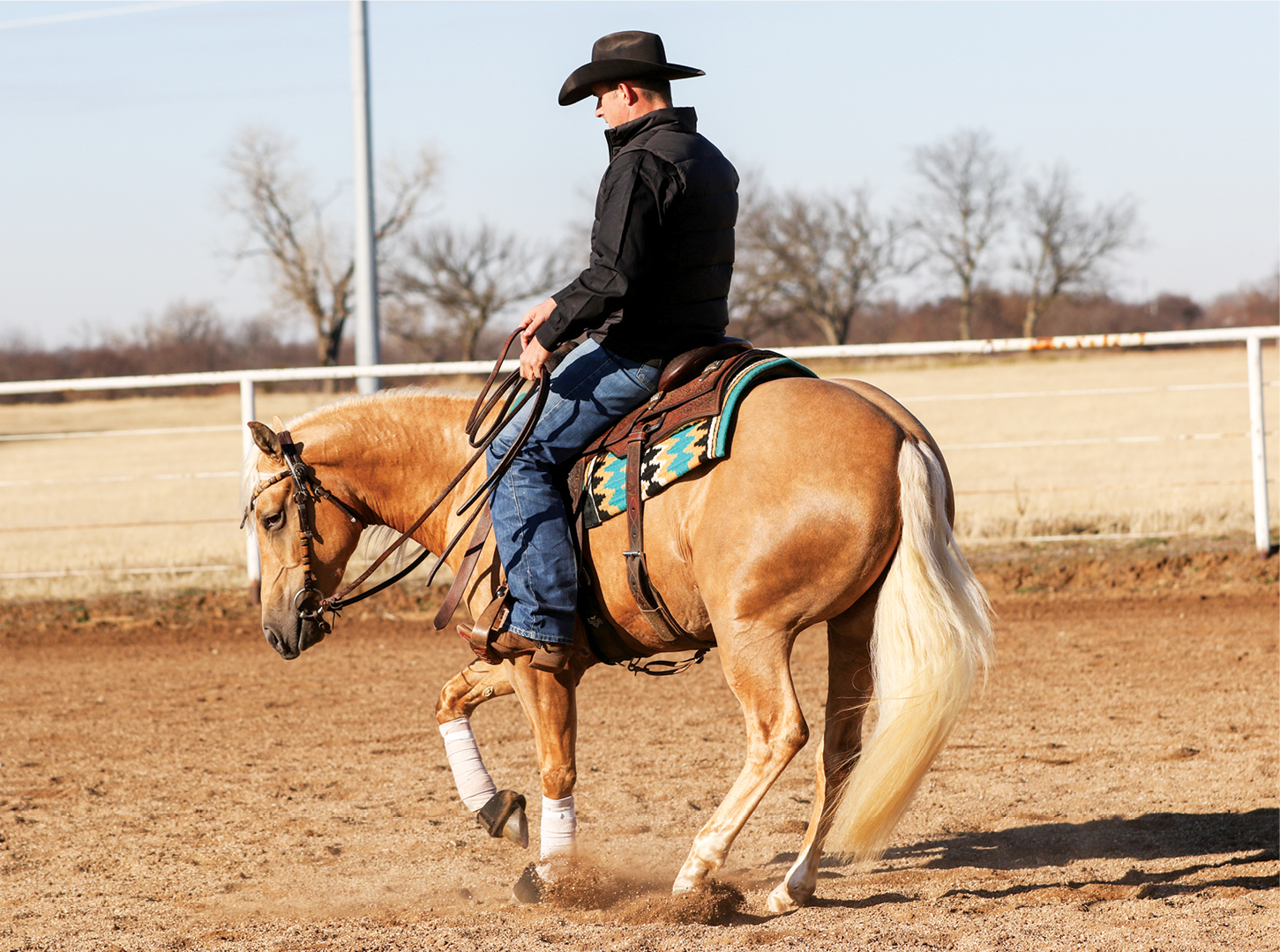When I introduce my horse to the turnaround, I’m not necessarly worried about the actual turn; I’m more focused on body control and teaching my horse how to move off of my leg. Because without those basic fundamentals, I can’t expect my horse to spin like I need her to for a reining class.
Since my horse is green, I’m riding her two-handed in a snaffle bit. I take time to warm her up, and during that time I test her body control and ability to move off of my legs. If everything is where I need it to be, I’ll start the beginning stages of turning her around.
One
I want to emphasize that a turn is a forward-motion maneuver, so I always start by stepping my horse up at the walk. While my hands are up, I have light contact on the rein, so she has to walk into my hands and stay framed up. I use my outside leg and ask her to move away from the pressure, crossing her front and back feet—almost like a two track—while continuing forward. She should stay soft in her body, and keep her shoulders and back rounded up.
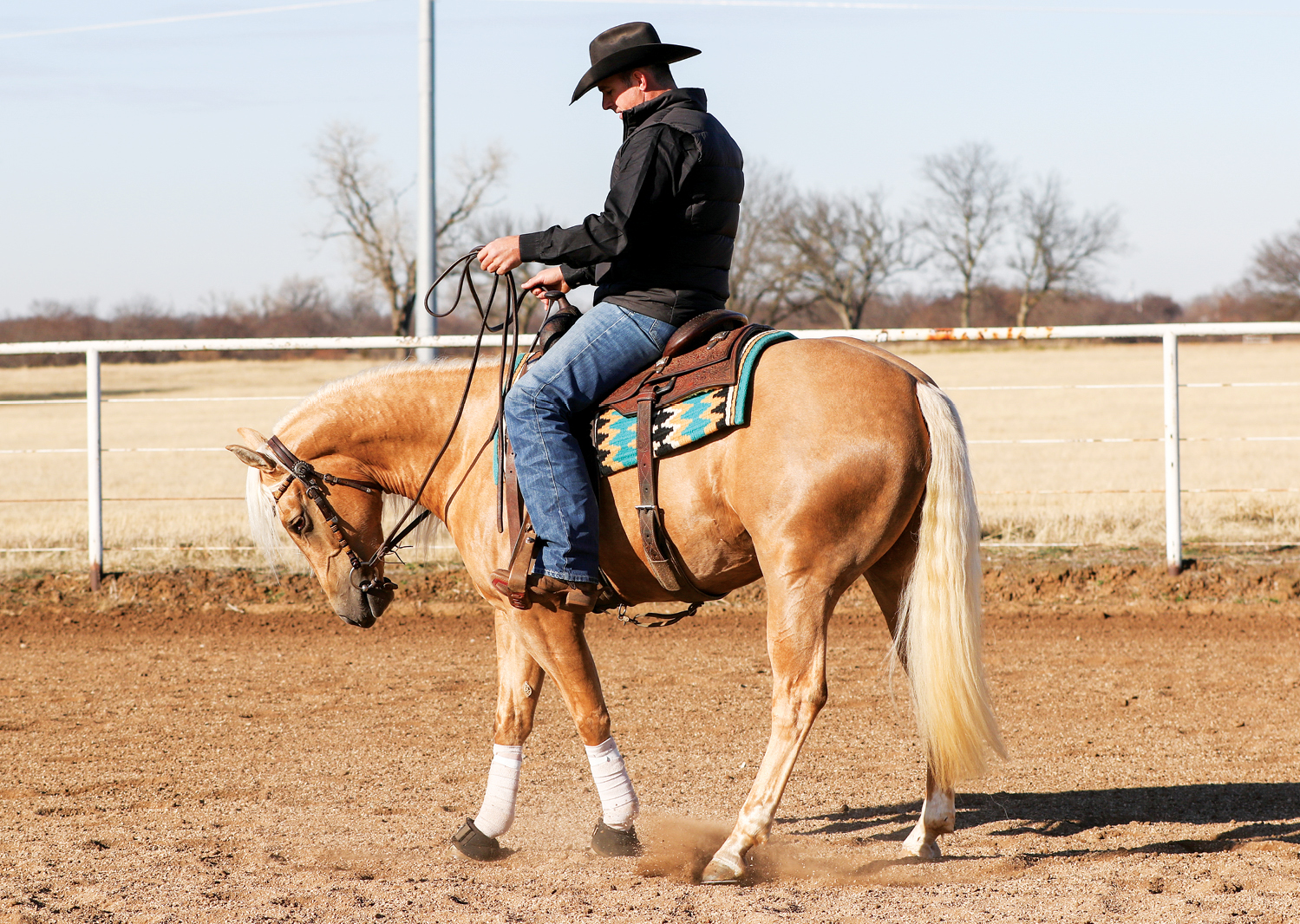
Two
Eventually I want my horse to move off my leg pressure and hunt that turn in the process. I’m still light in my hands, but I do have her nose tipped slightly to the inside because I want her feet to follow her nose. The minute my horse starts to turn, I release my outside leg because I want to reward her for moving off my leg pressure.
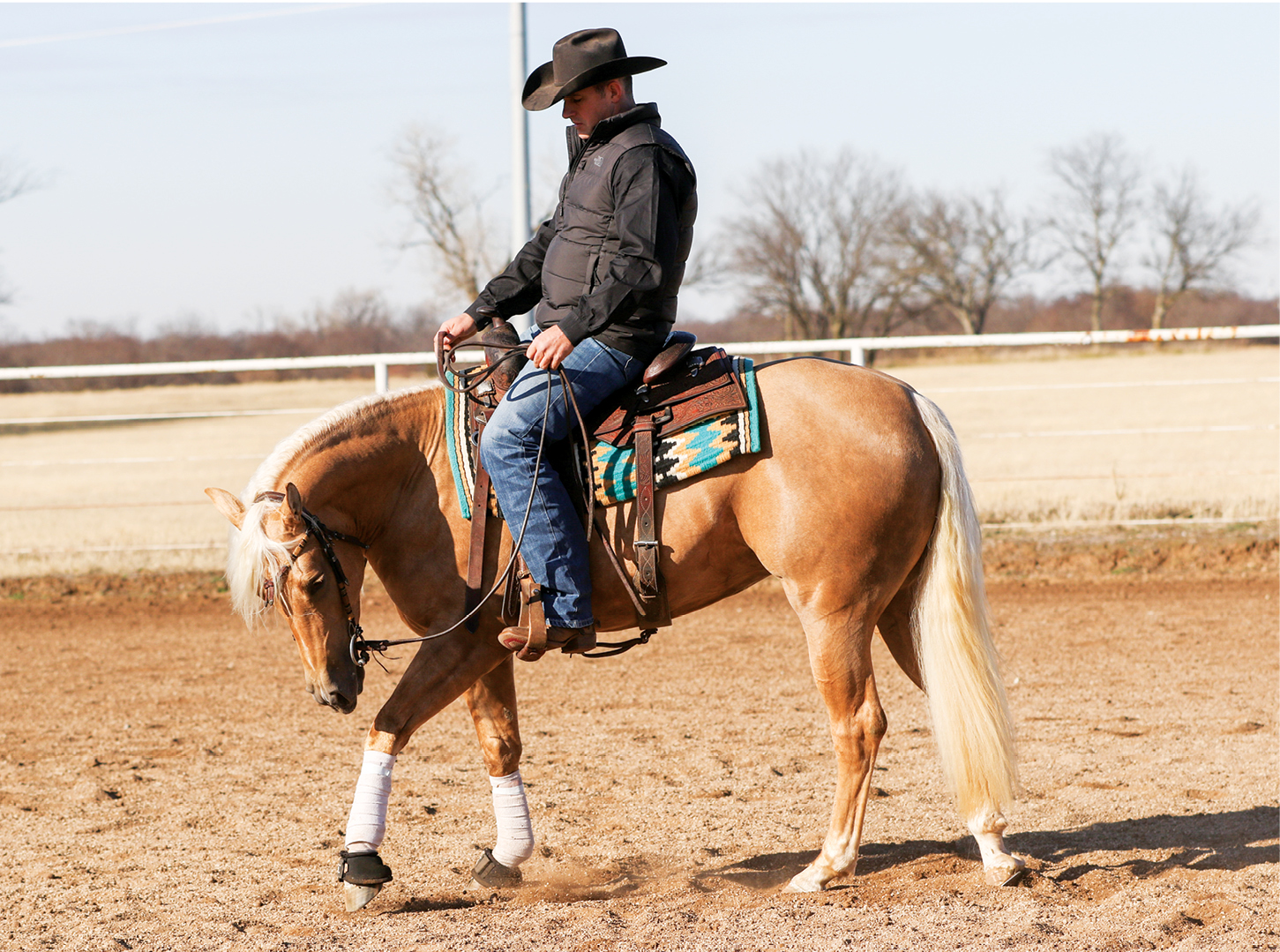
Three
At this point I’m not worried about how many rotations I have. My horse can countinue turning, or after a few steps she can walk forward. I’m just worried about her listening to my leg cue and moving away from it. But if my horse is willingly staying in that turn I’m going to let her keep turning as long as it’s a willing, cadenced turn.
I’m light in my hand, but I’m still using my reins to help my horse in the turn. My left rein is bringing her nose slightly to the inside of the turn, and I’m keeping my outside (right) rein on her neck during the turn. Even though her head might be slightly turned into the spin, I still want her body to be somewhat straight, which helps with forward motion throughout the maneuver.
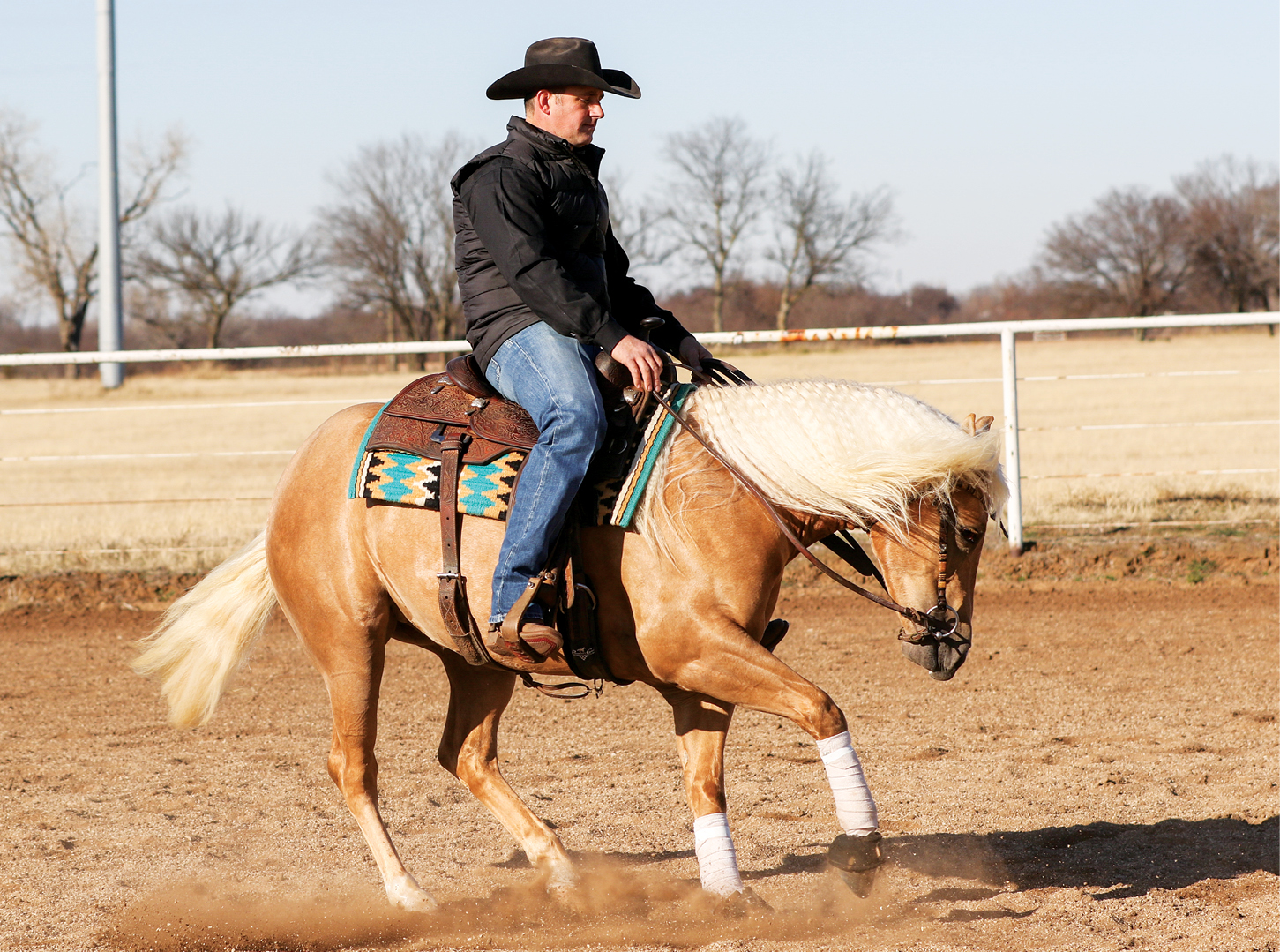
Four
If I feel like my horse’s body isn’t in the right spot or she’s looking for support from me with my leg, I’ll take her out of the spin and correct her body before asking her to turn again. If she starts to suck back or put too much weight on her hindquarters, I’ll even push her into a trot rather than just walking out of it. This way I can reestablish that forward motion I need to have and work on getting her belly up and her shoulders up. It’s also a great way to encourage a lazy or dull-sided horse to get moving.
I’ll slowly make my circle a little tighter, and as I’m getting ready to go back into the turn, I break my horse back down to the walk, walk her a couple of strides, and then cue her into the turn using my outside leg.
I break to the walk before initiating the turn because I want my horse to be relaxed and soft when she goes into the turn. I find that when I start turning from the trot, my horse gets a little more fired up than I want and starts rushing the turn, compromising her body position.
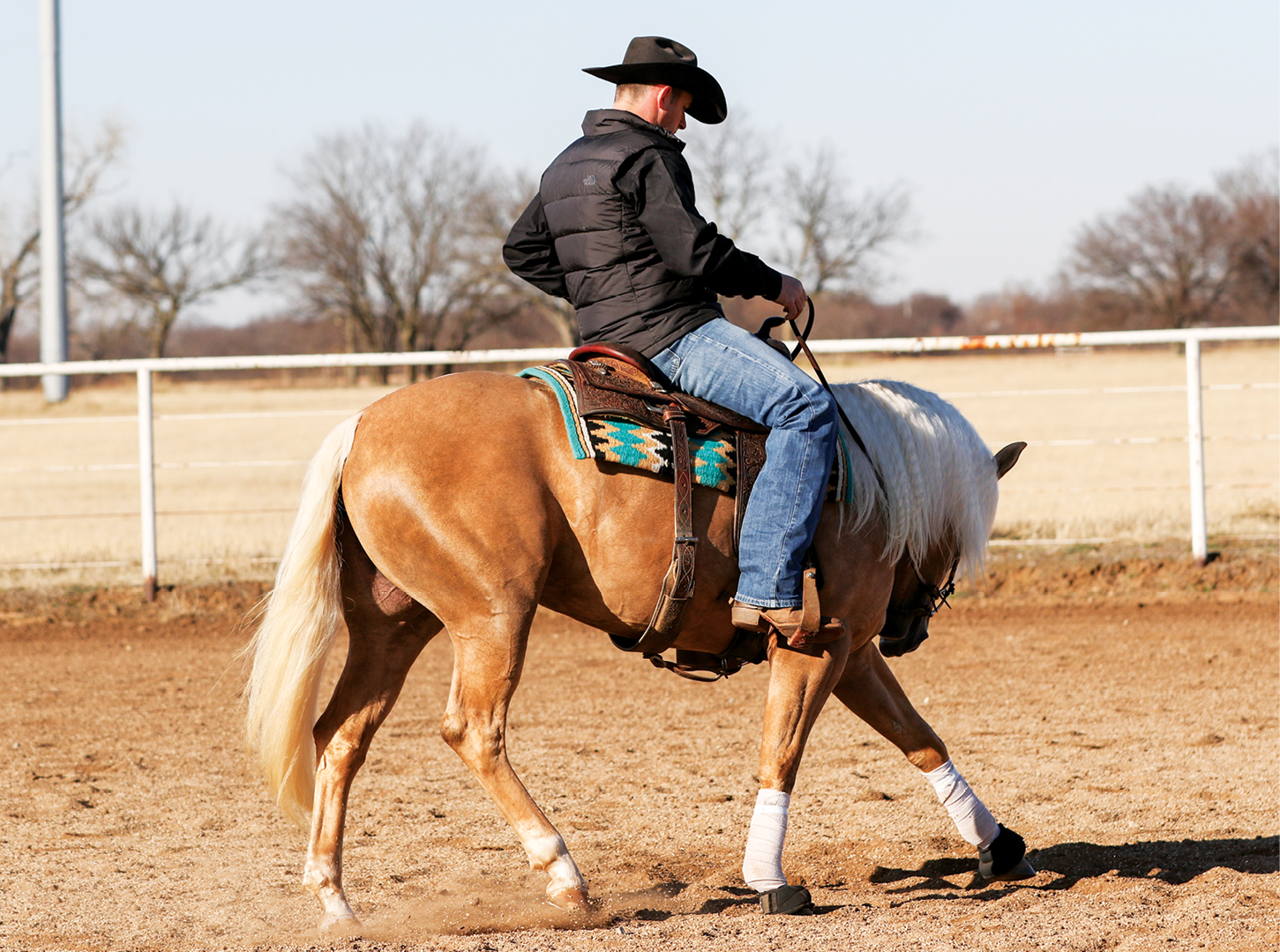
Five
I keep that forward motion going into the turn, release my outside leg, and sit balanced in the center of my saddle, so my horse can figure out her balance point. To keep balanced, some horses prefer to stay a little behind the bridle when they’re learning to turn; others might stretch their neck out. Each horse carries themselves a little differently and has a different balance point. My job is to stay out of my horse’s way so she can learn where her balance point is.
As she gets more comfortable turning, I’ll start to increase speed little by little. But I need to be able to turn properly going slow before I start worrying about any kind of speed, so at this point in my horse’s training speed is not the priority.
